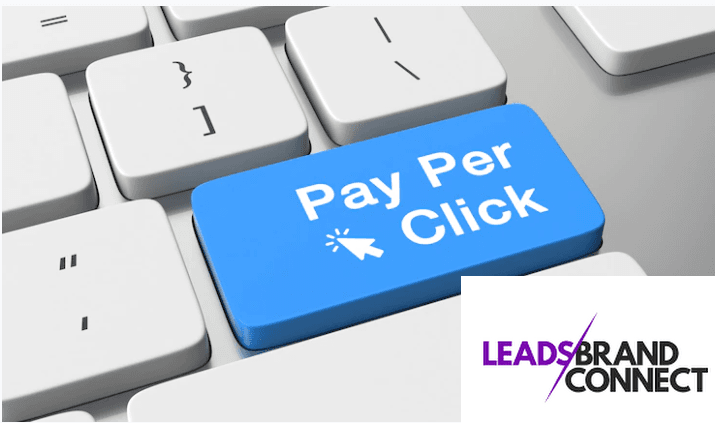

Cost-Per-Click Advertising Explanation & Examples
Cost-per-click (CPC) is a type of paid digital marketing. It is a price a marketer/seller pays every time a customer clicks on an ad on the internet. For example, you may own an e-commerce store and list your products on Facebook or Google. Every time a customer clicks on your ad, you have to pay a certain amount to Google or Facebook. You have to pay when someone clicks on your listed product and do not have to pay when a user scrolls past it.
What is CPC? Cost-per-click (CPC) is a type of paid digital marketing. It is a price a marketer/seller pays every time a customer clicks on an ad on the internet. For example, you may own an e-commerce store and list your products on Facebook or Google. Every time a customer clicks on your ad, you have to pay a certain amount to Google or Facebook. You have to pay when someone clicks on your listed product and do not have to pay when a user scrolls past it.
Marketers using CPC also measure impressions. Impressions are the number of times an ad gets displayed to the person. The user does not have to interact with the ad or click it to land on the targeted page. Thus, CPC is a preferable kind of paid advertising as you only pay if the person clicks on your ad. You get compensated when a user clicks on your ad and engages with it. The expenditure on ads can lead to a boost in traffic.
Several other paid advertising options do not require users to take action by clicking. For example, in CPM, the cost per thousand impression model requires a marketer to pay every 1000 impressions. Today users get exposed to a flood of content on the internet. Most do not bother to engage with ads unless the product or services are highly relevant to their needs.
It is crucial to notice the CTR (click-through rate) in the context of cost-per-click. A click-through rate is clicks divided by impressions. It is the ratio of users seeing your ad to them clicking it and engaging with it. One of the disadvantages of CPC is if an ad performs well and gets a high CTR, you may end up exhausting your budget sooner than you expect.
In that case, you have to weigh whether the cost of traffic on your website is worthwhile or not. If users buy your products and services, you can increase your budget. If users visiting the website are not interested in buying your services/products, you may have to rethink your CPC strategy.
- Pay Per Click Advertising Company
- Pay Per Click Advertising
- Different types of Cost Per Click advertising
- There are several types of cost-per-click marketing. You should know about them before you decide on a CPC campaign.
Flat Rate Based CPC: At times, search engines and websites use a flat rate-based CPC model to charge advertisers. It gets determined by assessing how much other advertisers are willing to pay for particular keywords. It also considers the going rate for similar advertisements on other websites. Websites can also use a formula to determine the rate by dividing the cost per impression by the click-through rate.
Based on the bid: The Second type of CPC gets determined by employing a bid-based model. Many advertising platforms like search engine giant Google use this technique. In this method, an advertiser has to place their bid by setting the price and duration of your campaign. How much you are willing to spend on a click is your bid.
Digital marketers have established that the higher the bid, the higher the chances of people seeing your ads.
How does cost-per-click get determined?
There is a simple formula to calculate CPC – Total cost/number of clicks.
Google Ads uses a different formula with a CPC bid-based system – Ad rank of the advertisement immediately below yours/your quality score + $0.01 = CPC.
For example, you are a Google ad specialist running a Google ad campaign that costs you $200. You get an average of 100 clicks on your ad; the cost per click is $2. The cost can range anywhere between $0.01 to $4, on average. The platform also considers the average prices of Google keywords, the length of the campaign, and the maximum cost.
What is the Quality Score? How does it affect the CPC
All Google PPC ads have quality scores based on relevance and the quality of an advertising campaign. All keywords receive a score from 1 to 10.
It is an internal process of the Google advertising agency. The company ensures that the landing pages and advertisements meet the standards Google users expect.
The quality score also determines how much you need to pay for a campaign. The factors that determine the quality of your Google ads are the relevance of ads, expected CTR, and landing page experience.
Quality score is crucial so that anyone with a huge budget does not manipulate Google search ads. The search engine wants its users to have a better experience. Hence, it does not place ads with low-quality scores at higher ranks.
Variations in Google networks and PPC ads Google has different types of networks. There is a Google search network and the networks within its display network.
The ads displayed on Google search engine results are Google search network ads. The ads put across different sites as marketers engaging in Google PPC marketing are Google display ads.
Why is it crucial to invest in PPC marketing?
- Make relevant and highly-targeted Google ads by assessing which ads are leading to more conversion
- You can segment your audience based on age, gender, occupation, etc. to determine the target audience
- Make specific Google display ads for the targeted audience with a call-to-action (CTA)
- Get access to statistics for every Google PPC campaign and modify your campaign accordingly.